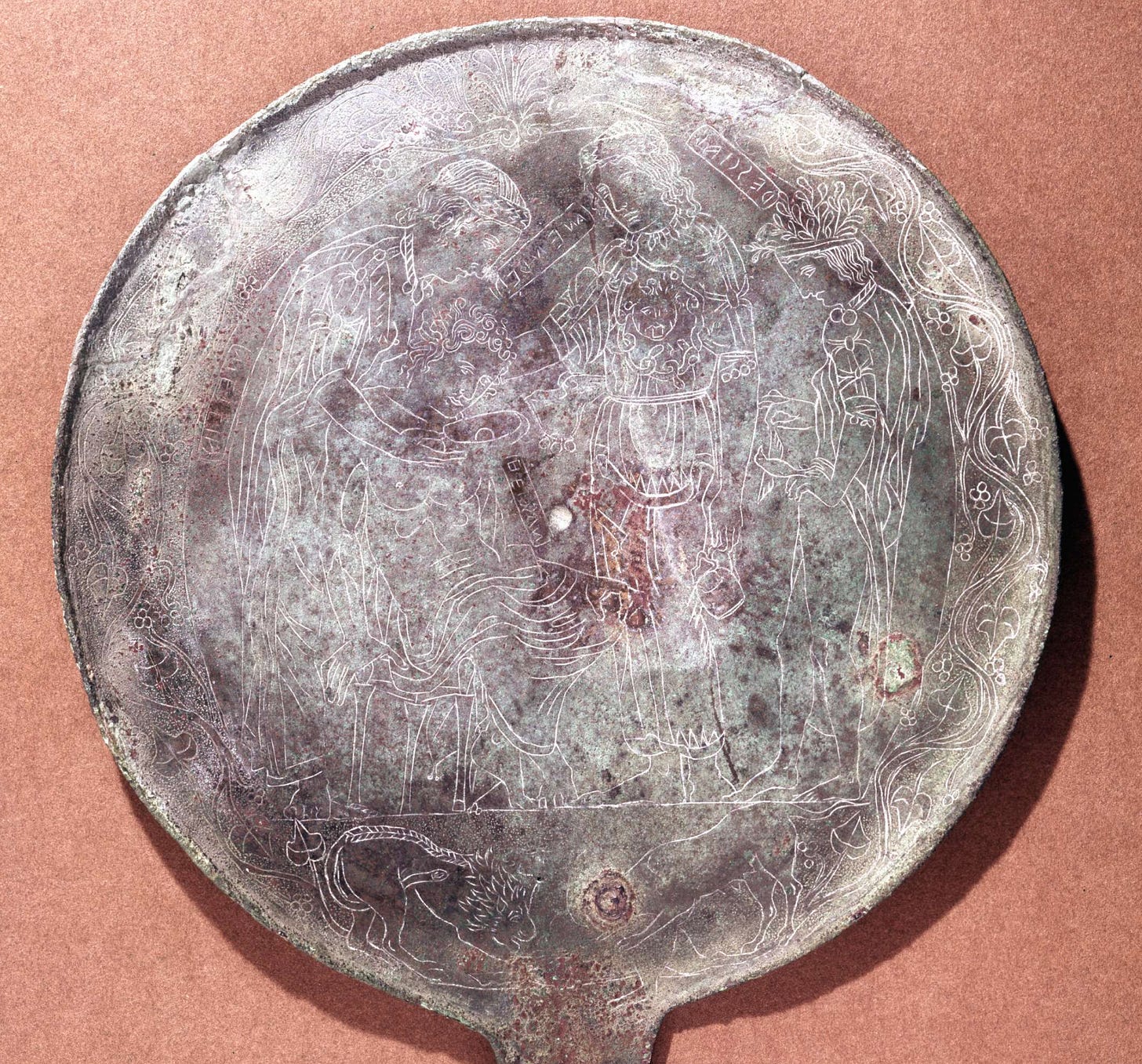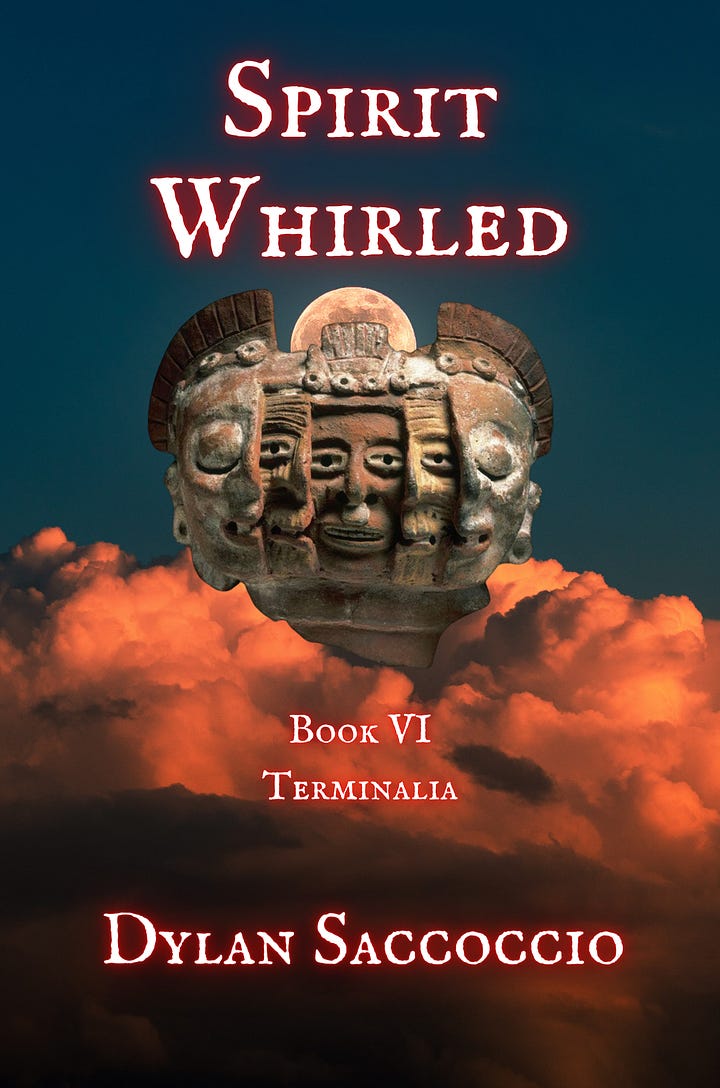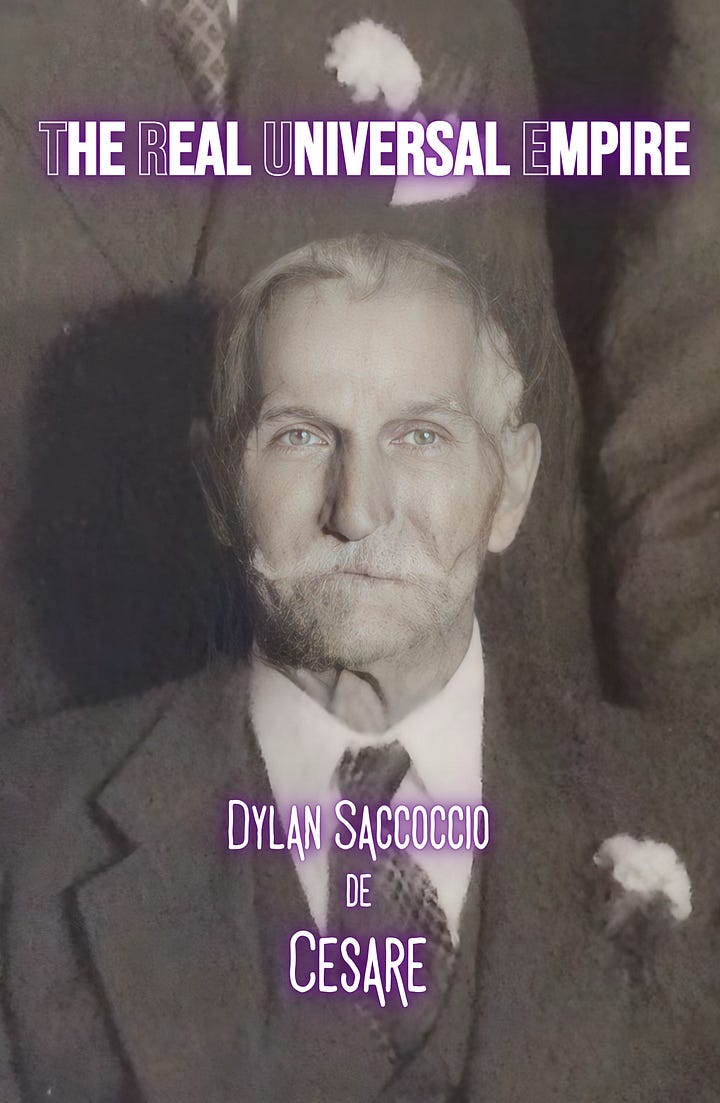Fresh Batch #187: Ancient Latium
Fountain of the Sun, The Alpine Indigenous Hyperboreans, 12 Cities of Cottia, Liguria
Reminder: All articles can be listened to through the Substack app for those who don’t prefer to read. Also, if you have questions or ideas you’d like me to address about this article, feel free to post them in the Substack app. If I can, I’ll address it in a livestream on Substack.
Ancient Latium Continued
Jacob Bryant wrote (Analys. Anc. Myth.. pp. 202-3.), “I should take the town of Egnatia in Italy to have been of the same purport as Hanes: for Hanes was sometimes expressed with a guttural, Hagnes; from whence came the ignis (fire) of the Romans. (I predicted Bryant would come to this conclusion in the last article.) In Arcadia near mount Lyceus was a sacred fountain; into which one of the nymphs, which nursed Jupiter, was supposed to have been changed. It was called Hagnon, the same as Ain-On, the fount of the Sun. From Ain of the Amonians, expressed Agn, came the άγνος of the Greeks, which signified any thing pure and clean; purus sive castus (pure or chaste). Hence was derived άγνειον, πηγαιον άγναιον, καθαρον άγνη, καθαρα (signifying pure): as we may learn from Hesychius. Pausanias styles the fountain Hagno (Pausanias L. 8. p. 678.): but it was originally Hagnon, the fountain of the Sun: hence we learn in another place of Hesychius, άγνοπολεισθαι, το ύπο ήλιου θερεσθαι. (This one is hard to translate, so take it with a grain of salt: the fountain is destroyed. Everything under the sun is harvested.). The town of Egnatia, which I mentioned above, stood in campis Salentinii, and at this day is called Anazo, and Anazzo. It was so named from the rites of fire: and that those customs were here practiced, we may learn from some remains of them among the natives in the times of Horace and Pliny. The former calls the place by contraction Gnatia (Horace. L. 1. sat. 5. v. 97.): Dein Gnatia Nymphis iratis extructa dedit risumque, jocumque; dum flammis sine thura liquescere limine sacro persuadere cupit. (This is another difficult one to translate for me on account that Gnatia seems to be personified: Then Gnatia gave the angry Nymphs a laugh and a jest; while he wishes to persuade the sacred threshold to melt without fire.)
“Horace speaks as if they had no fire: but according to Pliny they boasted of having a sacred and spontaneous appearance of it in their temple. Reperitur apud auctores in Salentino oppido Egnatiâ, imposito ligno in saxum quoddam ibi sacram protinus flammam existere. (It is found among the authors that in the Salentine town of Egnatia, when a piece of wood was placed on a certain stone, there immediately existed a sacred flame. Pliny. L. 2. c. 110. p. 123.) From hence undoubtedly came also the name of Salentum, which is a compound of Sal-En, Solis fons; and arose from this sacred fire to which the Salentini pretended. They were Amonians, who settled here, and who came last from Crete. (Τους δε Σαλεντινους Κρητων αποικους φασι. It is claimed the Salentini were Creten colonists. Strabo. L. 6. p. 430.)
The translation above has taken the liberty to claim a temple of Minerva, but Strabo wrote Athena, which is a Greek interpretation of the Etruscan Menrva, which signifies wisdom springin forth from the head of Tina, an Etruscan archetype comparable to Jupiter. However, as William Betham noted, the name doesn’t make sense from a Greek mindset, and is likely a corruption of the Celtic Athina, signifying from Tina. When Greeks use the prefix a-, it usually signifies without or the absense of the word is affixed to.
The following is claimed to be Jason’s restoration by Medea, a myth recorded only in a fragment of Simonides (fr. 204). While I include the British Museum’s description I take exception with the claims of how Medea is written. (It looks like MEIVIA.)

Bryant continued (Ib. pp. 203.), “Innumerable instances of this sort might be brought from Sicily: for this island abounded with places, which were of Amonian original. Thucydides, and other Greek writers, call them Phenicians: Ωκουν δε καί Φοινικες περι πασαν μεν Σικελιαν. (They hear that there are Phoenicians all over Sicily.) But they were a different people from those, which he supposes. Besides the term Phenician was not a name, but a title: which was assumed by people of different parts; as I shall show. The district, upon which the Grecians conferred it, could not have supplied people sufficient to occupy many regions, which the Phenicians were supposed to have possessed. It was an appellation, by which no part of Canaan was called by the ancient and true inhabitants: nor was it ever admitted, and in use, till the Grecians got possession of the coast. It was even then limited to a small tract; to the coast of Tyre and Sidon.”
I suspect this Greek farrago is the reason why it is believed the Phoenicians are from the eastern Mediterranean, rather than the peninsula of Italy. The term Phoenician only makes sense from an Italian context on account of the root being Etruscan: Puni, or Pone, which became the Latin Pœni. This following is likely why the Greeks likely called this culture the Purple Ones, or Phoenicians, if it is indeed historical. William Betham suspected that the Phoenicians were the Etruscan navigators.

According to the Latin poet Silius Italicus (Punica, VIII, 483ff.), the Romans got their official insignia from Vetulonia, “And Vetulonia, the pride, once, of all Etruria. That city gave us the twelve bundles of rods that go before a consul, those twelve axes with their silent menace, she first adorned the high curule chairs with ivory, and first trimmed official robes with Tyrian purple; while the bronze trumpet that stirs the warriors, that too was her invention.”
Dionysius of Halicarnassus wrote, “Indeed, those probably come nearest to the Truth who maintain that the Etruscan nation migrated from nowhere else, but was native to the country,” as well as, “Myrsilius of Lesbos does not call the people Pelasgians, but Tyrrhenians (Italians; Etruscans). And the same people were called by the rest of the world both Tyrrhenians and Pelasgians.” (Thus both are names for Etruscans, who were indigenous Italians.)
Should you decide to learn the ancient languages of Italy, or at least their alphabets, you’ll notice they are almost one for one Pelasgian, or its alleged later variation: Phoenician. Yet they are Celtic and don’t correspond to the Indo-European, like Greek does, or other languages from the Orient. Punic is Sicilian Phoenician, and the ancient languages of Malta and Ireland have such great affinity to this, that it is impossible for them to not be from the same parent language.
Sol, in Hetrusca etiam lingua Esar vocatus est.
The sun (Sol Invictus), in the Etruscan language is also called Esar. (El Schedius de Diis German. p. 108; Vall. Coll. Hib. Vol. V. p. 91.)
Æsar, id est, reliqua pars e cæsaris nomine Etrusca lingua Deus vocatur.
Aesar, which forms the remaining part of the name of Caesar, is in the Etruscan language the denomination of God. (Suetonius. Vita Aug. Cap. xcvii.)
“In the Gothic language, As, Aes, Aesus, is the name of Odin, or by way of distinction, that of God. In the plural, it is Asar and Aesir.” (Jameison’s Orig. of Greeks, p. 151.)
The Irish, whose language is observably descended from Punic (Sicilian Phoenician), also called God by the name of Aesar. Notice how aes signifies an age.
The Basque language is Spanish Phoenician. The Basque people using an Etruscan word for father is even more evidence of an Italian origin and diaspora, not an oriental one.
Also note that aita (eye-tuh) signifies priest, as well as author, which is a creator or maker.
To learn more about the system of priestcraft used by the ancients and how it ties into the system we use today, and expose the fraud perpetuated by the religious institutions, invest in the Spirit Whirled series. To learn more about the ancient history of Europe that was either obfuscated or omitted, invest in The Real Universal Empire.







Become a member to access the rest of this article.
Keep reading with a 7-day free trial
Subscribe to Ancient History, Mythology, & Epic Fantasy to keep reading this post and get 7 days of free access to the full post archives.








